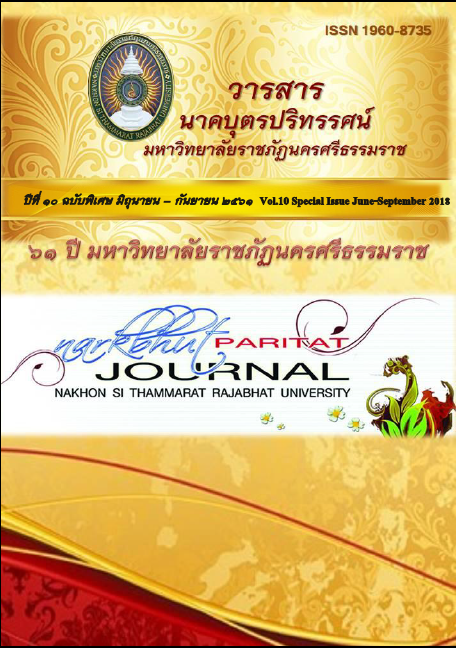การพัฒนาความคิดสร้างสรรค์ทางคณิตศาสตร์ของนักเรียนชั้นประถมศึกษาปีที่ 1 โดยใช้วิธีการแบบเปิด The Development of Grade 1 Students’ Mathematical Creative Thinking Using Open Approach
Main Article Content
Abstract
The purposes of this research were the development of grade 1 students’ mathematical creative thinking using open approach. This qualitative research made use of protocol analysis and analytic description in describing changes made by students. The quantitative research methodology was also adopted to analyze students’ mathematical creative thinking. The target group of this study are 38 Grade 1 students of Ban Pa Klok School under supervision of Phuket Primary Education Service Area Office and 30 Grade 1 students Uttarakij School under Krabi Primary Education Service Area Office in the 2017 academic year. Both qualitative data, including student’s written works, interview protocols, photos, and field records by the researcher and quantitative data, including data from the questionnaires, mathematical creativity assessment of Saito (2008).
The research findings revealed that: the open approach method of teaching improved students’ mathematical creative thinking, which could be seen from the fact that: the students dared to think differently and variously, could solve problems on their own, felt more comfortable expressing their opinions, spoke louder, had more self-confidence, dared to speak in front of the class, were more enthusiastic to participate in classroom activities, and their scores in all components of mathematical creative thinking improved from those before introduction of the open approach.
Article Details
References
Hashimoto, Y. (1997). The methods of fostering creativity through mathematical problem
solving. ZDM The International Journal on Mathematical Education, 29(3), 86-87.
Haylock, D.W. (1987). A framework for assessing mathematical creativity in school children.
Educational Studies in Mathematics, 18(1), 59-74.
Inprasitha, M. (2011). One feature of adaptive lesson study in Thailand: designing learning unit. Journal of Science and Mathematics Education in Southeast Asia, 34(1), 47-66.
Kwon, O.N., Park, J.S. & Park, J.H. (2006). Cultivating divergent thinking in mathematics
through an open-ended approach, Asia Pacific Education Review, 7(1), 51-61.
Nadjafikhah, M., Yaftian, N. & Bakhshalizadeh, S. (2012). Mathematical creativity: some
definitions and characteristics. Procedia - Social and Behavioral Sciences 31. Retrieved June 26, 2013, from http://ac.els-cdn.com/
Nohda, N. (1993). How to link affective and cognitive aspects in mathematics class.
Proceedings of the 17th International Conference for the Psychology of
Mathematics Education 1, 8-10.
Pehkonen, E. (1997). The State-of-Art in mathematical creativity. ZPD The International Journal on Mathematical Education, 29(3), 63-67.
Saito, N. (2008). Answer Creativity Test. Khon Kaen: Research Center for Mathematics
Education Faculty of Education Khonkaen University. (Copied documents).
Shriki, A. (2010). Working like real mathematicians: developing prospective teachers’
awareness of mathematical creativity through generating new concepts. Educational Studies in Mathematics, 73, 159-179.


